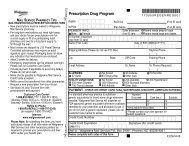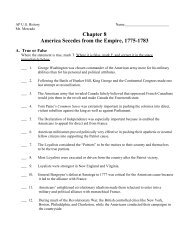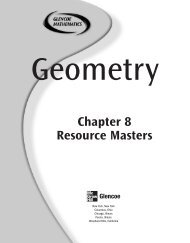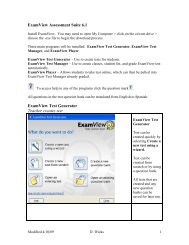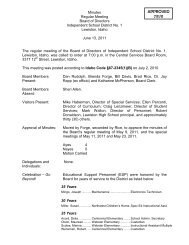Curriculum Focal Points
Curriculum Focal Points
Curriculum Focal Points
Create successful ePaper yourself
Turn your PDF publications into a flip-book with our unique Google optimized e-Paper software.
1<br />
Why Identify<br />
<strong>Curriculum</strong> <strong>Focal</strong><br />
<strong>Points</strong>?<br />
The National Council of Teachers of Mathematics produced Principles and Standards for School Mathematics<br />
(NCTM 2000) to update and extend the recommendations for learning and teaching mathematics<br />
that had appeared in <strong>Curriculum</strong> and Evaluation Standards for School Mathematics (NCTM 1989), Professional<br />
Standards for Teaching Mathematics (NCTM 1991), and Assessment Standards for School Mathematics<br />
(NCTM 1995). Principles and Standards enunciated the <strong>Curriculum</strong> Principle, which states, “A curriculum is<br />
more than a collection of activities: it must be coherent, focused on important mathematics, and well articulated<br />
across the grades” (p. 14). Specifically, “a well-articulated curriculum gives teachers guidance regarding<br />
important ideas or major themes, which receive special attention at different points in time. It also gives guidance<br />
about the depth of study warranted at particular times and when closure is expected for particular skills<br />
or concepts” (p. 16).<br />
This definition of curriculum articulation echoes a central question that occupies state and local leaders<br />
in mathematics education: What mathematics should be the focus of instruction and learning at particular<br />
grade levels of the pre-K–12 educational system? As Principles and Standards states, “Those who design curriculum<br />
frameworks, assessments, instructional materials, and classroom instruction based on Principles and<br />
Standards will need to make their own decisions about emphasis and order” (p. 31). <strong>Curriculum</strong> <strong>Focal</strong> <strong>Points</strong><br />
for Prekindergarten through Grade 8 Mathematics provides one possible response to the question of how to<br />
organize curriculum standards within a coherent, focused curriculum, by showing how to build on important<br />
mathematical content and connections identified for each grade level, pre-K–8.<br />
Inconsistency in the Placement of Topics by Grade Level in<br />
U.S. Mathematics Curricula<br />
Analysis of curricula of countries participating in the Third International Mathematics and Science<br />
Study (TIMSS [1997]; now known as the Trends in International Mathematics and Science Study) led to the<br />
familiar description of school mathematics in the United States as “a mile wide and an inch deep” (Schmidt,<br />
McKnight, and Raizen 1997). In addition, research on the curricular expectations of states and school systems<br />
across the country indicates inconsistency in the grade placements of mathematics topics, as well as in how<br />
they are defined and what students are expected to learn.<br />
State and local districts, with varying resources for providing leadership in mathematics education, have<br />
been working fairly independently to develop student learning expectations, as required by the federal law No<br />
Child Left Behind (2002). The result has been a wide variety of mathematics curriculum standards, with little<br />
consensus on the placement or emphasis of topics within specific grade levels (Reys et al. 2005). For example,<br />
in a study of the mathematics curriculum standards of ten states (Reys et al. 2006), the total number of gradelevel<br />
expectations in mathematics for grade 4 ranged from 26 to 89 (see table 1).<br />
<strong>Curriculum</strong> <strong>Focal</strong> <strong>Points</strong> for Prekindergarten through Grade 8 Mathematics



